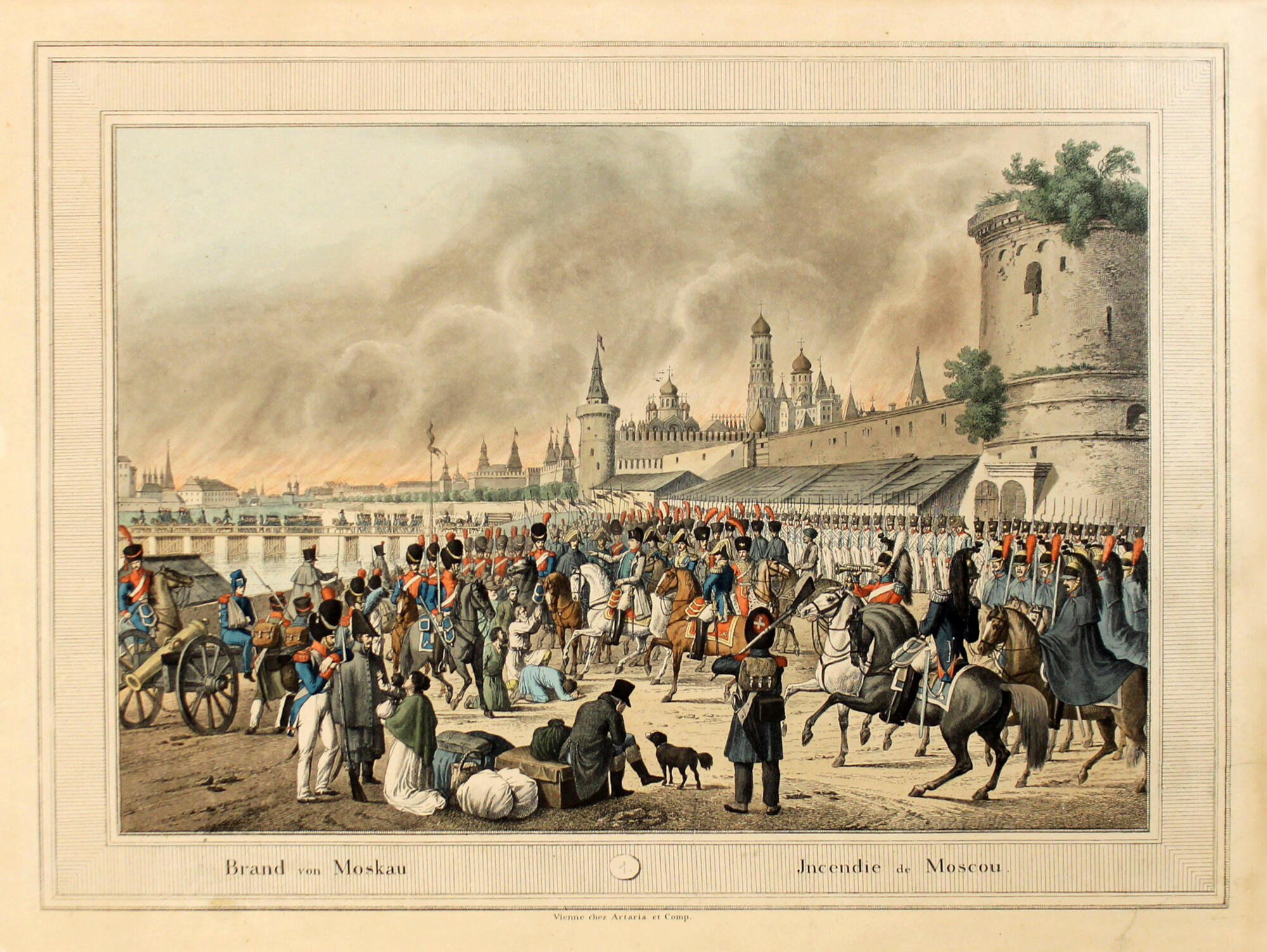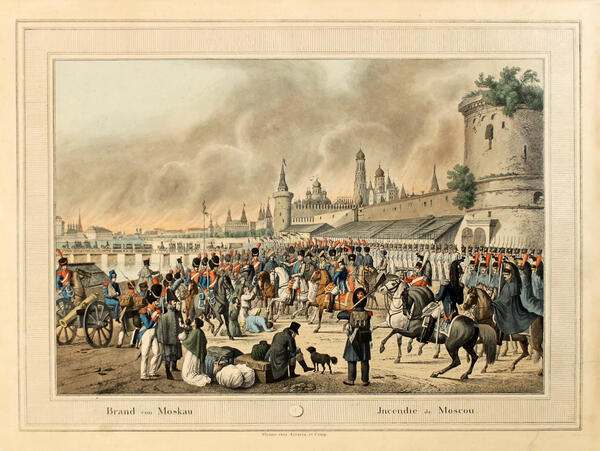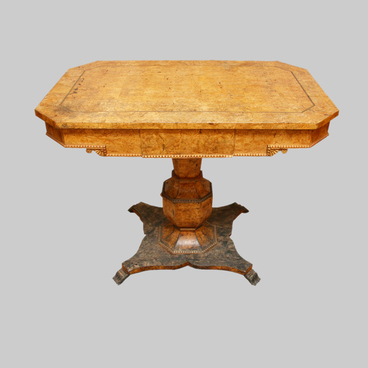The plot of the engraving is connected with the events of the Patriotic War of 1812, in which Matvey Muravyov-Apostol took part. The engraving by an unknown artist (presumably a copy of an engraving by Johann Adam Klein, created in 1830) depicts the Kremlin surrounded by flames, puffs of black smoke and French troops entering Moscow.
In the front of the image is a family that failed to flee the city in time: a man sits on a box with his things, covering his face with his hands, a woman with a small child in her arms, kneeling, addresses a French officer. Further on, the foot soldiers, cavalry and officers who amassed at the bank of the Moskva River, led by Napoleon on a white horse.
A border of horizontal and vertical hatching surrounds the image. In the frame under the image you can see the Brand von Moskau and Incendie de Moskou inscriptions in German and French, this phrase is the Fire of Moscow. Below the image in the margins it says Vienne chez Artapia et Comp., in the lower right corner C.P.S.C.M.
Before Napoleon entered Moscow, the ancient capital impressed with its area, the number of residential buildings, public facilities and churches. Roughly a fourth of the houses were stone, with over forty bridges stretching over the river. Ancient architectural monuments decorated the city. An army led by Kutuzov left Moscow on September 14th 1812. The retreating troops set fire to barges with hay and warehouses with provisions. Fire stations were emptied along with military barracks. The French army occupied Moscow on the evening of September 14. The day before, fires were started in various locations throughout the city, which were mostly contained. On the morning of September 16th, the Zamoskvorechye District went up in flames. The Kremlin was engulfed in tongues of flame. A strong wind kicked up over the entire city, it’s gusts fanning the flames. They fell like torches on roofs, buildings, Red Square and sales stalls. French General Philippe Paul de Segur wrote:
In the front of the image is a family that failed to flee the city in time: a man sits on a box with his things, covering his face with his hands, a woman with a small child in her arms, kneeling, addresses a French officer. Further on, the foot soldiers, cavalry and officers who amassed at the bank of the Moskva River, led by Napoleon on a white horse.
A border of horizontal and vertical hatching surrounds the image. In the frame under the image you can see the Brand von Moskau and Incendie de Moskou inscriptions in German and French, this phrase is the Fire of Moscow. Below the image in the margins it says Vienne chez Artapia et Comp., in the lower right corner C.P.S.C.M.
Before Napoleon entered Moscow, the ancient capital impressed with its area, the number of residential buildings, public facilities and churches. Roughly a fourth of the houses were stone, with over forty bridges stretching over the river. Ancient architectural monuments decorated the city. An army led by Kutuzov left Moscow on September 14th 1812. The retreating troops set fire to barges with hay and warehouses with provisions. Fire stations were emptied along with military barracks. The French army occupied Moscow on the evening of September 14. The day before, fires were started in various locations throughout the city, which were mostly contained. On the morning of September 16th, the Zamoskvorechye District went up in flames. The Kremlin was engulfed in tongues of flame. A strong wind kicked up over the entire city, it’s gusts fanning the flames. They fell like torches on roofs, buildings, Red Square and sales stalls. French General Philippe Paul de Segur wrote:


